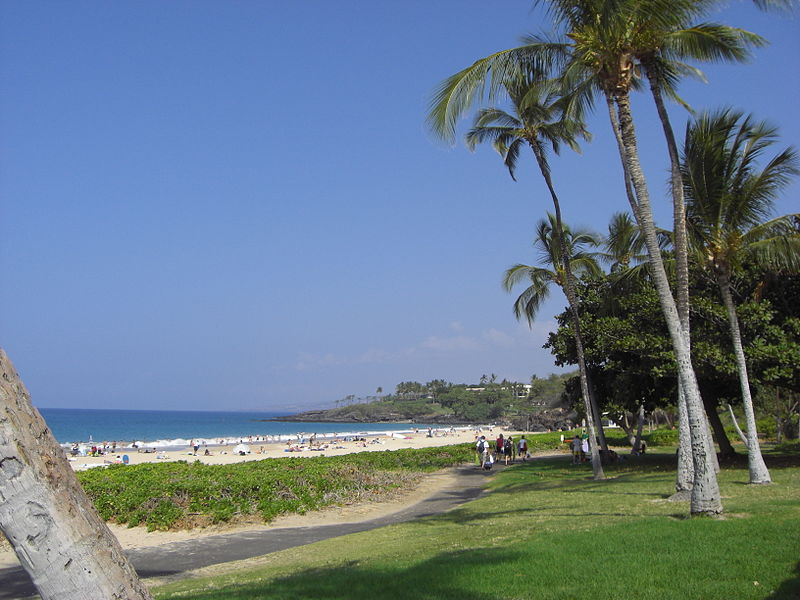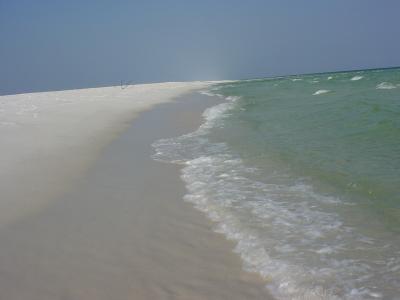Kailua Beach and Dune Management Plan

Photo attributed to Diego Delso, delso.photo. Incorporated here under the terms of the license CC BY-SA. No endorsement by licensor implied.
Posted by
Jessi KershnerProject Summary
Kailua Beach is located on the windward (eastern) shore of the island of O‘ahu. While Kailua Beach is currently relatively stable, it is still at risk from a number of threats including overdevelopment and sea level rise. In 2010, the University of Hawai‘i Sea Grant College Program (UHSG) partnered with the Hawai‘i Department of Land and Natural Resources (DLNR) and the Office of Conservation and Coastal Lands (OCCL) to develop a comprehensive beach and dune management and land use development plan for Kailua Beach. The plan provides long-term recommendations and strategies for adapting to climate change.
Background
Kailua Beach is a crescent-shaped carbonate beach approximately two miles long located on the windward coast of O‘ahu, Hawai‘i. It is an intact beach and dune system with no shoreline armoring. The town of Kailua, primarily a residential community, abuts most of the beach. Kailua Beach is a dynamic coastal system with an alternating pattern of accretion and coastal erosion seen throughout its history. A 2009 University of Hawai‘i erosion mapping study revealed a long-term accretion trend in the north-central section of Kailua Beach and an erosion trend in the southern section. In general, however, Kailua Beach is not eroding substantially and is actually an accreting beach, having grown wider by a half meter per year over the last 70 years. This accretion trend is expected to reverse and start eroding with the onset of increased rate of sea level rise in the coming decades. Nevertheless, a number of threats may expose Kailua Beach to continued and increased erosion including:
- ineffective sand management practices in Kailua Beach Park;
- aggressive dune alteration and landscaping;
- lack of dedicated access points, which incentives people to find alternate routes through sensitive dune habitats;
- accreted land claims, subdivision, and new development closer to the ocean; and
- insufficient shoreline setbacks.
In addition, the long-term effects of sea level rise are expected to result in beach erosion and a landward shift of the beach system.
Because sea level rise is expected to impact beaches all over Hawai‘i, there was initial support for a statewide beach management plan. However, due to the unique nature of each island, as well as each beach area, it became apparent that a one-size-fits-all management approach was not practical. In response, UHSG partnered with the DLNR and OCCL to develop a model comprehensive beach and dune management plan for Kailua Beach on which subsequent management and adaptation plans could be modeled. The plan was originally intended as a straightforward beach management plan but because climate change is predicted to be a strong driver of the coastal system, it is vital to consider (e.g., what to plan for, how to adapt, and what coastal retreat would look like). The plan has since evolved into a climate adaptation plan for Kailua Beach, specifically providing long-term recommendations and guidelines for adapting to climate change impacts (e.g., sea level rise). This management plan is meant to act as a model system for subsequent plans in Hawai‘i that will: (1) help prepare for and adapt to sea level rise and ensure the preservation of beach and dune ecosystems, and (2) address climate change adaptation through land use planning. The Kailua Beach and Dune Management Plan shares many of the same principles and values of the 2019 O‘ahu Resilience Strategy that is serving to define the priorities and actions for the island with a specific focus on climate change.
Implementation
The primary objectives identified by the Kailua Beach Management Plan include developing strategies to:
- Protect and enhance the sand-sharing system of Kailua Bay, as well as the cultural and natural resources of the dunes and beaches;
- Identify and monitor threats to beach resources including coastal processes and land use issues;
- Reduce coastal hazard exposure of abutting owners and develop a rewards system for abutting owners who participate in conservation strategies;
- Educate the public on appropriate coastal development practices as well as the potential impacts of climate change in Kailua;
- Assess the effectiveness of existing laws for dune and beach conservation;
- Foster a co-management agreement within the Kailua community;
- Identify community priorities and plan future coastal development in accordance with those priorities;
- Monitor shoreline processes to improve management plans; and
- Improve sand management practices at Kailua Beach Park.
The UHSG is also developing a citizen guide for dune and beach management and restoration in Hawai‘i.
The UHSG worked with a Hawai‘i-based coastal engineering company, Sea Engineering, Inc., to create future shoreline scenarios based on region-specific beach profile equilibrium solutions for dune migration under various sea level scenarios. Scenarios consisted of one, two, and three foot sea level rise over periods of 25, 50, and 100 years in order to forecast the location of the dunes and water line. The projections were based on current scientific knowledge and provide a useful picture of what future impacts sea level rise may produce at Kailua Beach.
Outcomes and Conclusions
Based on the model projections, the dune morphology will change at Kailua Beach in the next 50 years, although not substantially. In the next 100 years, however, with approximately three feet of sea level rise with unabated greenhouse gas emissions, the dunes may shift behind existing homes in some cases. One option is to utilize a coastal construction control line (CCCL) that is established to prohibit seaward development. The line would be adjusted every five years based on sea level rise data to account for beach changes. The goal of this collaboration is to improve the Kailua community’s resilience to climate change through understanding of climate change impacts on Kailua Beach, and facilitate better informed decision-making. The hope is that this project may be integrated into a series of regional beach management district plans for the windward side of O‘ahu, and provide a template for statewide climate change adaptation policy.
Citation
Kershner, J. (2021). Kailua Beach and Dune Management Plan [Case study on a project of the University of Hawaii Sea Grant College Program]. Version 2.0. Product of EcoAdapt's State of Adaptation Program. (Last updated March 2021)





